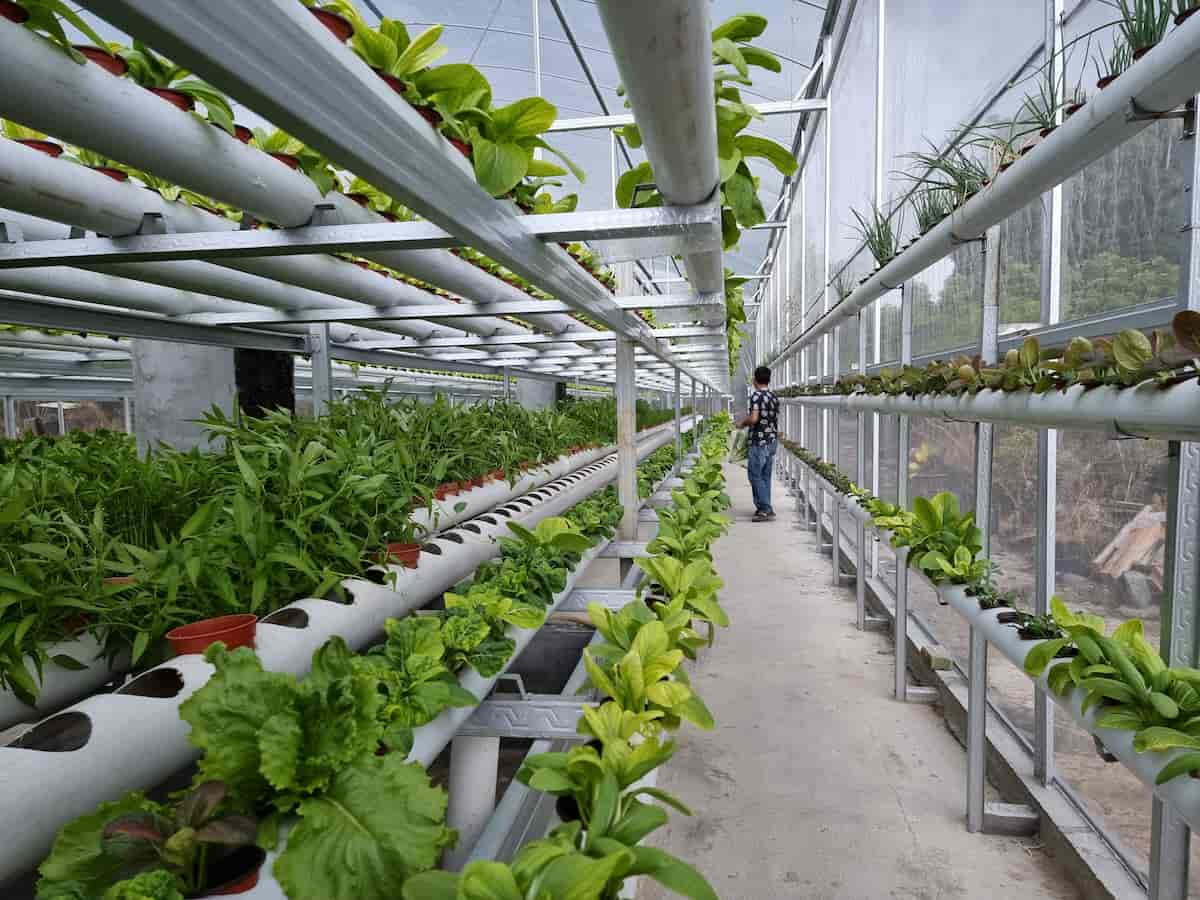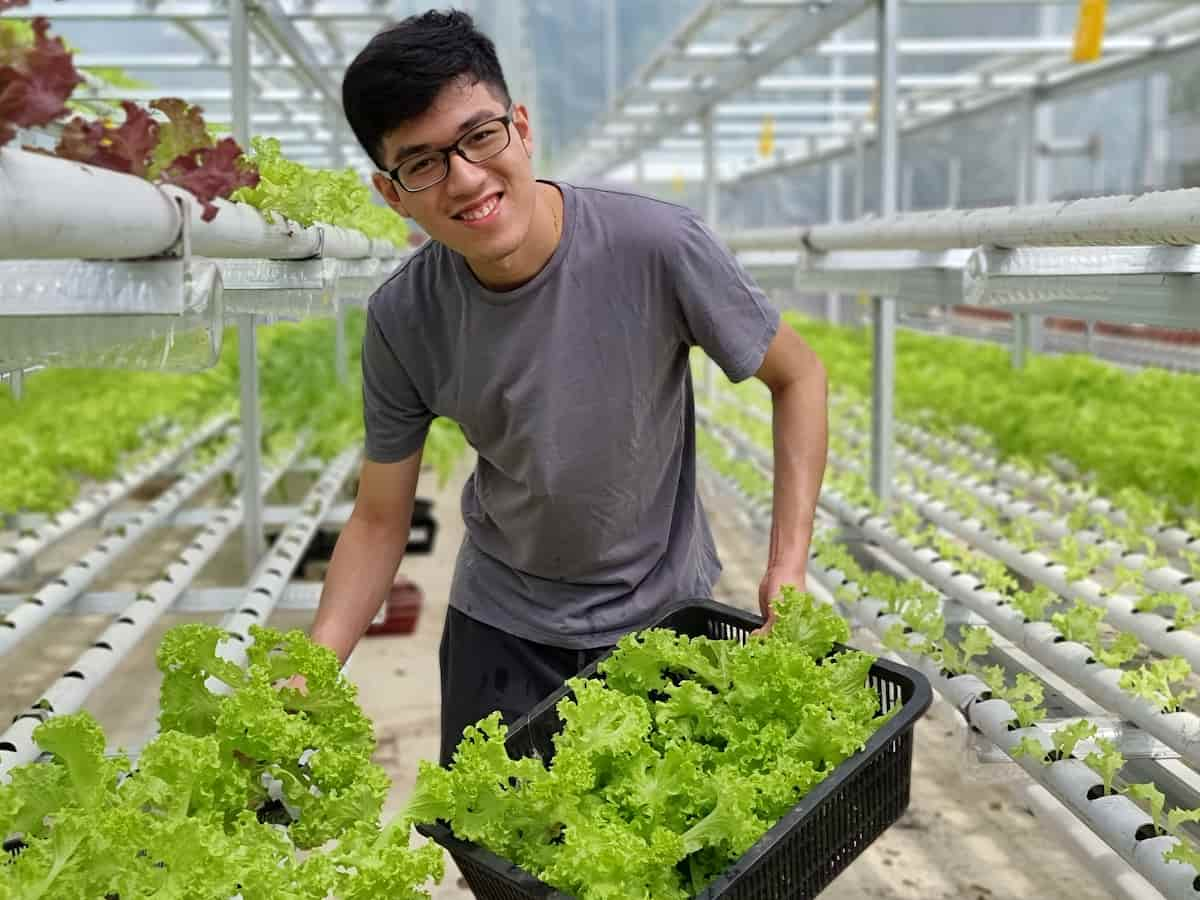Climate change has resulted in highly unpredictable weather patterns around the world. As monsoons become less reliable, farmers are looking for convenient and effective alternatives to grow their crops. Water is used to grow crops in hydroponic greenhouses. Plants and vegetables grow in a growing medium like rock wool, foam, clay pellets, recycled foam, gravel, sawdust, coconut fiber, or peat. They receive nutrients through a feeder.

The main advantage of hydroponic greenhouse systems is that they hold better crops while using simple water-based techniques. When plants are grown hydroponically in the greenhouse, they grow faster than when they are grown in soil. Plants don’t need roots to find oxygen, water, and nutrients, so they sprout better flowers and fruit. As a result of using the hydroponic technique, more plants and vegetables are produced. Often, hydroponics is referred to as “sub-irrigation culture.”.
Start Greenhouse Hydroponic Farming from Scratch
Get Started
It is relatively easier to set up a hydroponic farm for growing vegetables. The setup is not expensive and does not take up much space. You just need a few pieces of PVC pipes and a water pump. And your easy-to-maintain hydroponic garden will be ready. So far as materials are needed, you will require PVC pipes, a variety of L joints, and smaller pipes.
However, you can get the same framework fabricated in mild steel from a welding shop for a sturdier setup. Ensure that the pipes are leak-proof as water constantly flows thrown the system. Any leakage in the joints will jeopardize the setup. Here are the steps for making one
- Drill a hole at the plant pot base for the watering tube of the hydroponic system.
- The bottom of the same pot should be drilled with several smaller holes so excess water can drain into the nutrient solution tank. Use a 3 mm drill bit for this. Located in a corner, one of these holes will route the air pump tube.
- The watering tube must be cut to length and inserted into the central hole; the air pump tube must be inserted into its corresponding hole.
- The submersible pump and oxygenator should be placed at the bottom of the nutrient solution tank.
- Connect the watering tube to the submersible pump and route its power cable over the top of the tank; connect the oxygenator to the air pump tube.
- Plant pots should be placed in nutrient solution tanks.
- Connect the watering tube to the central connector on the T-fitting, and tighten it firmly to avoid leaks of water and pressure. The supply tubes should reach the edge of the plant pot.
- Your drip irrigation system will be supplied with drip solution through two lengths of 16 mm pipe connected to the T-fitting and plugged with the end plugs.
- Make two holes in each supply tube with an awl, then insert the 5 mm couplings for the capillary tubes into the holes (carefully to prevent leaks).
- Capillary tubes should be cut into 4 lengths and connected to couplings and drippers at each end.
- Upon completion, the hydroponic system should be placed in a DIY hydroponic greenhouse. Winter protection for tender plants can be provided by an off-the-shelf greenhouse constructed of a metal structure covered with sturdy plastic sheeting.
- ·Alternatively, you can build a cabinet-style hydroponic greenhouse from wood or metal, using wooden strips or U-shaped sheet metal profiles for the uprights and crosspieces, assembling them with screws and hinges. Simply use honeycomb polycarbonate panels or strong plastic sheeting to close the greenhouse on all sides.
- You can place your hydroponic tanks on shelves in your DIY hydroponic greenhouse.
Tap water is good enough to start with. Plants need nutrients and other compound mixtures in their water to grow healthy. It is also important to periodically check the pH level of the solution and adjust it if necessary. Different plants require different pH levels, and hydroponic experts can provide these instructions. Unlike outdoor farming, hydroponic farming requires hands-on attention. Monitoring the water flow, pH, and nutrients your crops need to survive is important.
How Much Will it Cost to Install Hydroponics in A Greenhouse?
A wide range of costs are associated with installing a hydroponic system in a greenhouse. It depends on the type and size of the hydroponic system you want and whether you purchase all the materials or use items around your house. For a ready-made, small, budget-friendly hydroponic system for your greenhouse, you can expect to pay between $300 and $1,000. The cost of DIY solutions, such as those described above, can be much less than that, whereas large-scale systems can be much higher.
In case you missed it: How to Start Terrace Hydroponic Farming: Key Rules, Tips, and Benefits

Plants are Best for Hydroponics
Some plants grow easier with hydroponics than others, though all types of plants can be grown with this method. Some commonly grown plants in greenhouse hydroponic systems are ornamental flowers, herbs, and greens. When starting out, choosing plants that can be grown without a traditional substrate (soil) is best. Hydroponic plants are easy to grow, including:
- Lettuce
- Kale
- Spinach
- Chard
- Strawberries
- Mint
- Basil
Generally, flowering and fruiting plants are more difficult to grow this way due to their size and weight. However, with the right hydroponic system, they can also be grown successfully:
- Cucumbers
- Tomatoes
- Peppers
- Beans
- Squash
As a final note, root vegetables like carrots, beets, potatoes, and trees or shrubs should be avoided when starting with hydroponics. Hydroponically growing these species requires more attention and is generally much more difficult.
Advantages
- Plants can be grown year-round in greenhouse hydroponics systems since the planter controls lighting, nutrient supply, and temperature.
- It is typical for hydroponics systems to produce higher-yielding and faster-growing plants. The grower’s careful control of environmental factors and increased oxygen levels inside the nutrient solution may be the reason.
- Hydroponic systems can deliver nutrient-rich solutions directly to the roots. Thus, plants can grow in close proximity to one another without competing for root space.
- The adaptability of hydroponic systems cannot be overstated. Unlike traditional gardens, you can usually integrate hydroponic systems into your home regardless of location or size.
- Hydroponic systems use 80 to 90 percent less water than soil-grown plants, despite relying heavily on water to facilitate their growth.
- As a result of controlled entrances, insects and other pests don’t pose much of a problem. The system makes it harder for insects to penetrate and attack plants.
In case you missed it: Frequently Asked Questions About Soilless Farming (Hydroponics)

Conclusion
Many people are looking for a healthier, stress-free gardening experience. Hydroponics is a great answer to all of these desires. It has even been proven to increase plant yields and reduce waste significantly. Mind-blowing benefits come with this system, but it does take dedication. If you’re the type that consistently likes to grow fresh fruits and vegetables, then this could be a great one-time investment for you.
- Feed Your Flock for Less: Top 10 Tips to Save on Chicken Feed
- Ultimate Guide to Ossabaw Island Hog: Breeding, Raising, Diet, and Care
- Hatching Answers: The Top 10 Reasons Your Chickens Aren’t Laying Eggs
- Eggs and Economics: Breaking Down the Cost of Raising Backyard Chickens
- Defend Your Greens: Proven Methods to Keep Iguanas Out of Your Garden
- Ultimate Guide to Cinnamon Queen Chicken: A Comprehensive Guide for Beginners
- Ultimate Guide to California Tan Chicken: Breeding, Raising, Diet, Egg-Production and Care
- Ultimate Guide to Marsh Daisy Chicken: Breeding, Raising, Diet, and Care
- 10 Types of Chicken Farming Businesses You Can Start for Profits